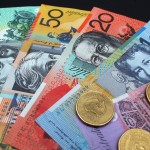Gold advanced to the highest level in more than two months, after a slump in equities on concern that growth in emerging economies will slow, boosted demand for the yellow metal as an alternative investment. A weaker dollar and increased Chinese physical demand also supported the metal, while assets in the SPDR Gold Trust, the biggest bullion-backed ETF remained unchanged on Friday, which put some pressure on gold prices.
On the Comex division of the New York Mercantile Exchange, gold futures for settlement in February traded at $1 268.80 per troy ounce by 08:48 GMT, adding 0.34% for the day. Prices touched the strongest level since November 19th at $1 276.70 , while day’s low was touched at $1 266.30 an ounce.
Gold futures settled last 5-day period 1.3% higher, capping a fifth consecutive week of gains, the longest rally since September 2012. However, the precious metal settled last year 28% lower, the steepest annual decline since 1981 as investors lost faith in the metal as a store of value and amid speculation Fed will continue scaling back its monetary stimulus throughout 2014.
The yellow metal continued its upward trend for a third day, as stocks and currencies from Argentina to Turkey plunged.
The debasement of the Argentine peso fueled investors concerns over emerging markets and came after downbeat data from China.
Data showed the Chinese growth slowed its pace in the fourth quarter, which sent the MSCI All-country Index of stocks trailing 2.4%, the most since June.
China’s economy grew by 1.8% in the fourth quarter, the government agency reported, underperforming projections that expansion would ease to 2.0% after posting at 2.2% in the three months through September.
China’s GDP expanded by 7.7% in 2013, matching the median estimate of analysts surveyed by Bloomberg. This was also the same expansion rate as in 2012, which however was the slowest since 1999.
Previous reports also indicated economic slowdown in China, which continued to support the market, while at the same time US equities retreated on concerns that growth in emerging economies will slow. A preliminary private report showed on Thursday that declining new orders led to the first contraction in China’s manufacturing activity in six months, confirming that a mild slowdown late last year has extended into 2014. The HSBC Flash China Manufacturing PMI plunged to 49.6, defying analysts’ projections for a minor increase to 50.6 from December’s final reading of 50.5. Meanwhile, the Flash China Manufacturing Output Index registered at 51.3 in January, down from 51.4 in December, hitting a three-month low.
Earlier in the week, China’s National Bureau of Statistics reported that output in factories, mines and utilities grew at a slower pace in December, fueling concerns over economic slowdown and demand for riskier assets. China’s industrial production grew by 9.7% on an annual basis last month, the slowest since July, trailing analysts’ expectations for a drop to 9.8% from November’s 10% advance.
“Gold’s momentum was already on the upside and the emerging-markets sell-off adds to the fuel,” said Kelly Teoh, a strategist at brokerage IG Asia Ltd. in Singapore, cited by Bloomberg. “There’s been haven demand since the start of the year.”
Chinese demand
However, Chinese physical demand seemed to be robust as data showed that the trading volumes exceeded the daily average volumes of Q4.
On the Shanghai Gold Exchange, trading volumes for bullion of 99.99 percent purity exceeded the daily average of the fourth quarter, which was about 11 525 kilograms, every day since January 6th.
According to data by the World Gold Council, China probably overtook India as the largest global consumer in the previous year.
Fed stimulus outlook
A batch of downbeat US reports did little to change the overall market consensus that Fed will continue tapering throughout 2014.
Data released on Thursday, showed the Chicago Federal National Activity Index unexpectedly declined to 0.16 in January, defying analysts’ estimates of an increase to 0.90. In December the index stood at 0.69.
A separate report by the US Department of Labor revealed the number of continuing jobless claims unexpectedly increased to 3.056 million from 3.022 million in the previous week. Analysts had expected the number of Americans who continue to receive unemployment benefits will decrease to 2.930 million.
The National Association of Realtors reported that the number of existing home sales increased to annualized 4.87 million in December after a downward revision of November’s sales to 4.82 million. However, analysts had projected that the sales of existing homes in the US will reach 4.94 million.
Central bank’s policy makers said on December 18th that they will reduce monthly asset purchases to $75 billion from $85 billion, underscoring improving labor market conditions.
The central bank will probably continue to pare stimulus by $10 billion at each policy meeting before exiting the program in December, according to a Bloomberg News survey of 41 economists, conducted on January 10th. The Federal Open Market Committee is scheduled to meet next on January 28-29.
A weaker dollar also supported the yellow metal. The US dollar index, which measures the greenback’s performance against a basket of six major peers, fell by 0.09% on Monday to trade at 80.48 by 08:47 GMT. Prices shifted in a daily range between day’s high and low, 80.59 and 80.48. Weakening of the greenback makes dollar-denominated commodities cheaper for foreign currency holders and boosts their appeal as an alternative investment.
Assets in the SPDR Gold Trust, the biggest bullion-backed ETP, remained at 790.46 tons on Friday, after being reduced by 0.7%, the biggest one-day drop since December 23rd. The fund has lost 41% of its holdings in 2013. A total of 553 tons has been withdrawn in 2013. Billionaire hedge-fund manager John Paulson who holds the biggest stake in the SPDR Gold Trust told clients on November 20 that he wouldn’t invest more money in his gold fund because it isn’t clear when inflation will accelerate.





